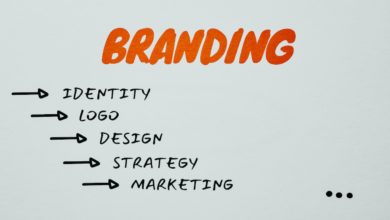
Branding
Branding Metrics for Talent Acquisition
Understanding the effectiveness of employer branding is no simple feat, as it’s not determined by a single marker but rather a complex matrix of metrics. Each company must uncover the blend of indicators that will provide meaningful insights aligned with the unique objectives of their branding strategies.
Here are twelve pivotal metrics to consider when assessing employer branding:
- Candidate Satisfaction Score (CSS) – This metric provides insights into candidates’ recruitment experiences, offering a glimpse into how they perceive your brand. Measuring this on a scale of 0-10, with respondents grouped according to their score, helps identify promoters (9 or 10), neutrals (7 or 8), and detractors (6 or lower). A CSS score provides a snapshot of sentiment and serves as a benchmark for future recruitment methods improvements.
- Referral Rate by Current Employees – A company’s workforce can be its best brand ambassadors. Thus, the rate at which employees refer their contacts for job opportunities serves as an excellent measure of confidence in the brand. High referral rates often signify satisfaction and trust in the company and its culture, leading to more effective recruitment and higher retention rates.
- Hiring Expense Rate – The costs involved in hiring, such as advertising, assessments, and agency fees, can be significantly reduced with a robust employer brand. Lower hiring expense rates often indicate a strong employer brand.
- Social Media Interactions – Employer brand perception is also measurable via the number of likes, shares, and followers your company garners on social platforms. It gives a sense of your brand’s market appeal and the public’s engagement with your content.
- Unsolicited Applications or Interest Expressions – An increase in the number of spontaneous applications or interest inquiries signifies a strong employer brand that is attracting potential employees.
- Career Page Analytics – Data such as visitor duration, total views, source of visitors, application completion rates, and bounce rates from your website’s career page can offer insights into the effectiveness of your employer branding strategies.
- Quality of Applicants – A high-quality candidate pool can signal the attractiveness of your employer brand. Metrics like the ratio of applicants to interviews, number of referrals, and performance of new hires can help gauge this.
- Employer Reputation Score (ERS) – Developed by Link Humans, this method analyzes what employees, past, present, and future, are saying about your company across multiple platforms and review sites, measuring against 16 brand attributes.
- Interview Experience Ratings on Job Boards – Platforms like Glassdoor allow candidates to rate their interview experiences. A high positive rating is indicative of a strong employer brand.
- Job Offer Acceptance Ratio – This measure calculates the probability of job offer acceptance and can indicate the effectiveness of your employer branding strategies.
- Diversity of Candidates – If your candidate pool reflects a broad spectrum of backgrounds, it signals an inclusive employer brand. Analyzing demographics via anonymous surveys can provide this data.
- Return on Investment (ROI) for Employer Branding – A measure of the financial benefit against the costs incurred for employer branding initiatives. Calculating the ROI includes factors like cost savings from increased applications, improved retention rates, efficient recruitment, and more.
Through these metrics, companies can gain a comprehensive understanding of their employer branding’s effectiveness, helping them fine-tune their strategies and attract top talent.
Read more at Academy to Innovate HR



